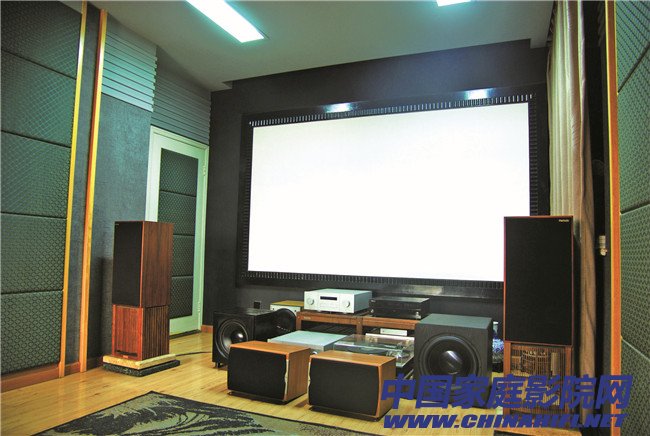China Home Theater Network: Many entry-level home theater enthusiasts will consult or view the knowledge of home theater audio equipment in the forum, especially the basic home theater audio equipment purchase configuration. So what do entry-level players need to know and pay attention to when setting up a home theater? The following is a brief introduction.

1, THX certification
Many of today's home theater audio equipment are THX-certified or THX-compliant, so what is THX certification? This is the first thing entry-level players need to know.
THX certification is mainly to provide complete quality specifications for home audio-visual equipment. In 1982, George Lucas, the producer of the film Star Wars series, founded THX Studio and introduced THX certification service in 1990, covering home theater equipment, film and recording studios. Its purpose is to improve the sound quality of the movie in the cinema, so that the audience can fully feel the attempt of the director to express. An AV system consisting entirely of THX-sized equipment should achieve the following effects: full-range treble and bass; smoother and more natural sound; minimal bass distortion in the hearing range; and clearer vocal positioning.
2, speaker
In the home theater audio system, the speaker is the last link to transmit the sound, and the part that the listener is most intuitive to feel the details of the sound. The home theater speakers must ensure the unit, characteristics, and tone of each channel. It is best to use the same brand of speakers, so that the speakers can have a high consistency and fully express the moving sound of the entire audiovisual space.
The 5.1 or 7.1 channel of the home theater sound system includes left, center and right channels and two or four channel surrounds, while the .1 channel is a subwoofer, also known as a subwoofer or subwoofer. The main purpose of the subwoofer is to supplement the low frequency of the entire sound system, which can well render the sound of the picture. It can be said that the theater system lacking the subwoofer is not complete. Ordinary living room with the recommendation 5.1, the channel is not chaotic, the wiring is relatively simple, of course, many open room environments do not have the side hang of the position 7.1.
3, AV power amplifier (Dolby, DTS)
In the home theater audio system, the AV amplifier is divided into a pre-stage decoder, a post-stage power amplifier, and a combined AV power amplifier with a built-in decoder. For beginners, you can choose a combined AV amplifier with built-in decoder.
The first is to determine the type of built-in decoder. AC-3 has been widely used with the recognition of the world film industry, but DTS is somewhat superior to the AC-3's surround sound system. Therefore, the optional built-in AC The AV amplifier of the -3 and DTS dual decoders is a more ideal choice. Secondly, select the appropriate output power and determine the rated output power of the AV amplifier according to the driving power required for the actual use of the speaker. Of course, if you have ample budget, you can choose a THX-certified AV amplifier.
4, the player
Leaving aside Blu-ray and HDDVD hard disk players, the recent emerging Internet TV set-top box is also a good video source device because it can interpret Dolby Digital or dts sound. Some entry-level users hope to choose a signal source in one step, then it is recommended to choose a Blu-ray player, which is also the mainstream today.
The above is just an introduction to the audio part. The home theater contains many factors such as audio and video and the environment, all of which need to be carefully matched to achieve perfect results. When setting up a home theater sound system, it is best to purchase a variety of cinema equipment and repeat the audition until you choose your favorite voice. If you have any questions about the process of building a home theater, please feel free to contact the engineers of China Home Theater Network and we will answer you for free. Of course, you can also enter the Home Theater Forum (http://) to share and share with the enthusiasts.
Electric Fan referred to as fan, also known as fan, fan fan, is a motor-driven fan rotation, to achieve the air to speed up the flow of household appliances, mainly for cool Jieshu and circulation of air. Widely used in homes, classrooms, offices, shops, hospitals and hotels and other places.
The fan is mainly composed of fan head, fan blade, net cover and control device and other components. Fan includes motor, front and rear cover and shaking head blowing mechanism. The main components of the fan are: AC motor. Its working principle is: power coil in the magnetic field in the force and rotation. Electric energy into mechanical energy, and because of the coil resistance, so inevitably part of the energy to be converted into heat.
Common household fans are essentially axial fans, that is, the flow of wind parallel to the fan axis of rotation.
Electric Fan
Portable Fan, Electric Cooling Fans, Electric Stand Fan, Electric Wall Fan
Ningbo APG Machine(appliance)Co.,Ltd , http://www.apgelectrical.com